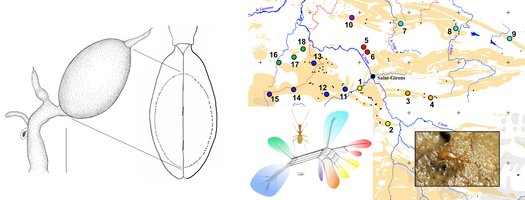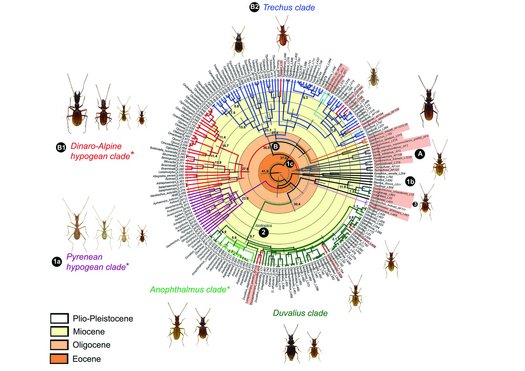My research is focused on the description and a better understanding of the origin and evolution of subterranean biodiversity of Coleoptera, from populations and species up to the ongoing radiations.
Hypogean habitats are present all over the planet. Although arthropods account for nearly 80% of the animal kingdom, a limited number of organisms have successfully colonized these underground habitats, characterized by extreme environmental conditions and limited food income almost entirely dependent on introductions from the surface. These organisms belong to aquatic and terrestrial crustaceans, arachnids, myriapods, collembolans and beetles.
The evolution and origin of cave life has always fascinated evolutionists and biologists, since cave-dwelling organisms show a highly modified biology and morphology, combining the loss of some traits (eye degeneration, depigmentation) with the enhancement of others (mechanical and chemical sensory organs, body shape modifications). These morphological adaptations are often associated with changes in the life cycle and metabolism: subterranean species tend to develop K-strategy trends, such as the production of fewer but much larger eggs, longer life spans and, in some extreme cases, reduction of number and length of larval instars. Cavernicolous invertebrates are very good models to study speciation and diversification due to the isolation of populations in well-defined karstic units without gene flow, leading to a strong structuration of populations.
Among insects, many groups of Coleoptera have repeatedly colonised the subterranean medium, but only two families of beetles have significant terrestrial underground radiations : Leiodidae (Leptodirini) and Carabidae (Trechini). Subterranean species of both groups share morphological adaptations to an underground lifestyle: loss of metathoracic wings, eyes and body pigments, and parallel changes in body shape and size. The use of molecular approaches in subterranean biology has increased in the last decades, as these methods appear as a powerful tool to overcome the drawbacks associated with morphological convergences and to understand the histories of these groups, which are alternatively considered as living fossils or recent invaders of the subterranean environment. Caves are often considered as islands, where the fauna is restricted to a well-defined area with lack of gene flow leading to a strong differentiation between populations. This fragmentation of the subterranean domain into isolated entities is key for understanding the diversification of cave faunas, highlighting a mode of allopatric speciation where vicariance events play a major role. Reduced gene flow makes subterranean populations, like island populations, excellent models for observing and interpreting evolution patterns. The genetic isolation of many species in well-defined karstic units, and their evolutionary trajectories, under the combined influence of strong unidirectional selection pressure and genetic drift, result in remarkable endemism, often higher than island endemism.
The micro-endemism of cave taxa confers them a very high patrimonial value, the number of strict subterranean species being estimated between 50,000 and 100,000. Among them, beetles of the tribes Trechini (Carabidae) and Leptodirini (Leiodidae) are unique models for studying evolutionary processes in arthropods, due to their extreme diversification in some hotspots and their range of adaptations to underground life.





